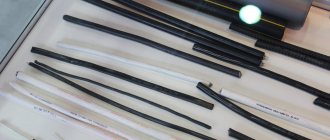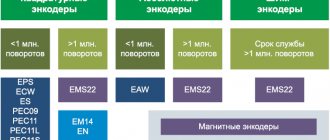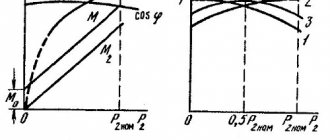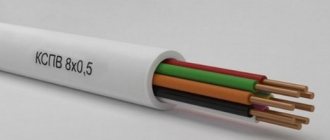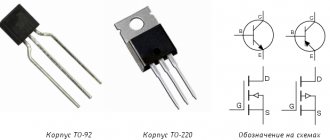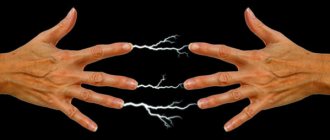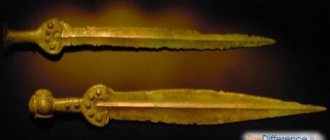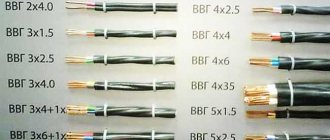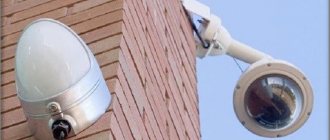The efficiency and reliability of equipment directly depend on the electric motor, so its selection requires a serious approach.
By means of an electric motor, electrical energy is converted into mechanical energy. Power, revolutions per minute, voltage and type of power supply are the main indicators of electric motors. Also, weight, size and energy indicators are of great importance. Electric motors have great advantages. Thus, compared to heat engines of comparable power, electric engines are much more compact in size. They are perfect for installation in small areas, for example in the equipment of trams, electric locomotives and on machine tools for various purposes. When using them, no steam or decomposition products are released, which ensures environmental friendliness. Electric motors are divided into DC and AC motors, stepper motors, servo motors and linear motors. AC electric motors, in turn, are divided into synchronous and asynchronous.
Electrical engine
An electric motor is an electrical machine that converts electricity into shaft rotation energy with negligible heat losses. The main operating principle of any electric motor is to use electromagnetic induction as the main driving force. To achieve this, the electric motor design includes:
- Fixed part (stator or inductor).
- The moving part (rotor or armature).
Depending on the purpose, the type of current used and design features, electric motors have a large number of varieties.
Application areas of electric motors
Electric motors are the largest consumers of electricity in the world, accounting for about 45% of all electricity consumed.
- Electric motors are used everywhere, the main areas of application are:
- industry: pumps, fans, compressors, conveyors, driving force for other machines, etc.
- construction: pumps, fans, conveyors, elevators, heating, ventilation and air conditioning systems, etc.
- consumer devices: refrigerators, air conditioners, personal computers and laptops (hard drives, fans), vacuum cleaners, washing machines, mixers, etc.
| ED1 | Functions | Areas of use |
| Rotating electric motors | Pumps | Water supply and wastewater systems |
| Chilled or heated water pumping systems, heating systems, HVAC2, irrigation systems | ||
| Sewage systems | ||
| Pumping of petroleum products | ||
| Fans | Supply and exhaust ventilation, HVAC2, fans | |
| Compressors | Ventilation systems, refrigeration and freezing units, HVAC2 | |
| Accumulation and distribution of compressed air, pneumatic systems | ||
| Gas liquefaction systems, natural gas pumping systems | ||
| Rotate, blend, move | Rolling mill, machines: processing of metal, stone, plastic | |
| Pressing equipment: processing of aluminum, plastics | ||
| Textile processing: weaving, washing, drying | ||
| Mixing, shaking: food, paints, plastics | ||
| Transport | Passenger elevators, escalators, conveyors | |
| Freight elevators, cranes, hoists, conveyors, winches | ||
| Transport means: trains, trams, trolleybuses, cars, electric cars, buses, motorcycles, bicycles, rack railway, cable car | ||
| Angular movements (stepper motors, servo motors) | Valves (open/close) | |
| Servo (position setting) | ||
| Linear motors | Open close | Valves |
| Sorting | Production | |
| Grab and move | Robots |
Note:
- ED - electric motor
- HVAC - heating, ventilation and air conditioning systems
DC motors
DC electric motors combine a wide range of devices that provide high efficiency in the transformation of electrical energy into mechanical energy. To reliably connect the electrical circuit of the moving and stationary parts of a DC electric drive, a brush-commutator unit is used. Depending on the design features of the brush-collector unit, all DC electric machines are divided into the following groups:
- Collector.
- Brushless.
In turn, commutator electric motors are conventionally divided into the following types:
- Self-exciting.
- Excited by permanent electromagnets.
Devices with independent excitation are characterized by low power, so these electric drives are used for non-critical operations with low load. Self-excited machines are divided into:
- Devices with series excitation, where the armature is connected in series with the field winding.
- Electric motors with parallel excitation, where the armature is connected parallel to the field winding.
- Mixed excitation electric drive, which is characterized by the presence of parallel and series connections.
Universal commutator-type motors
Where are universal commutator type electric motors used? Without them, industrial and household appliances do not function, for example, fans, juicers, meat grinders, vacuum cleaners, refrigerators and the like. They operate from a direct current network of one hundred ten and two hundred twenty volts, and from an alternating current network of 127 and 220 volts.
The design of such motors is similar to bipolar DC motors with series excitation.
Here, not only the armature is assembled from sheet-type electrical steel, but also the pole and the yoke, that is, the stationary part of the magnetic wire.
The field winding can be connected to either one or the other side of the armature. This reduces radio interference generated by the motor. The same rotation speed for both direct and alternating current is achieved by implementing an excitation winding with branches. The only difference is that with a direct current network it is used completely, and with an alternating current network it is only partially used.
The torque is obtained through the interaction of the current with the magnetic excitation flux.
Such motors have a power of only five to six hundred watts (but in some cases, for example, in electric tools, they reach eight hundred watts), and a rotation speed of two thousand seven hundred seventy to eight thousand revolutions per minute. Since the starting currents here are small, starting resistances are not needed. The minimum number of pins on universal collectors is four. Of these, two are used for connecting to a DC network, and the other two are for AC. Moreover, in the latter case, the engine efficiency will be lower due to large electrical and magnetic losses. Alternating current will be consumed more than direct current, since it has not only an active component, but also a reactive one.
The rotation speed can be controlled, for example, by an automatic transformer or a rheostat.
AC motors
AC electric motors are represented by a wide range of devices, which are distinguished by numerous design and operational characteristics. Depending on the speed of rotation of the rotor, electric machines are divided into synchronous and asynchronous types.
Synchronous motors are characterized by the same rotor speed and magnetic field of the supply voltage. This type of electric motor is used to manufacture high-power devices. In addition, there is another type of synchronous drive - stepper motors. They have a strictly defined position of the rotor in space, which is fixed by supplying power to the stator winding. In this case, the transition from one position to another is carried out by applying voltage to the required winding.
An asynchronous electric motor has a rotor speed different from the speed of the magnetic field of the supply voltage. Currently, this type of electric motor is widely used both in production and in everyday life.
Depending on the number of phases of the supply voltage, the electric drive belongs to one of the groups:
- 1-phase;
- 2-phase;
- 3-phase;
- multiphase.
Electric motor AIR characteristics
| engine's type | R, kW | Rated rotation speed, rpm | efficiency,* | COS f | 1p/1n | Mn/Mn | Mmax/Mn | 1n, A | Weight, kg |
| AIR56A2 | 0,18 | 2840 | 68,0 | 0,78 | 5,0 | 2,2 | 2,2 | 0,52 | 3,4 |
| AIR56V2 | 0,25 | 2840 | 68,0 | 0,698 | 5,0 | 2,2 | 2,2 | 0,52 | 3,9 |
| AIR56A4 | 0,12 | 1390 | 63,0 | 0,66 | 5,0 | 2,1 | 2,2 | 0,44 | 3,4 |
| AIR56V4 | 0,18 | 1390 | 64,0 | 0,68 | 5,0 | 2,1 | 2,2 | 0,65 | 3,9 |
| AIR63A2 | 0,37 | 2840 | 72,0 | 0,86 | 5,0 | 2,2 | 2,2 | 0,91 | 4,7 |
| AIR63V2 | 0,55 | 2840 | 75,0 | 0,85 | 5,0 | 2,2 | 2,3 | 1,31 | 5,5 |
| AIR63A4 | 0,25 | 1390 | 68,0 | 0,67 | 5,0 | 2,1 | 2,2 | 0,83 | 4,7 |
| AIR63V4 | 0,37 | 1390 | 68,0 | 0,7 | 5,0 | 2,1 | 2,2 | 1,18 | 5,6 |
| AIR63A6 | 0,18 | 880 | 56,0 | 0,62 | 4,0 | 1,9 | 2 | 0,79 | 4,6 |
| AIR63V6 | 0,25 | 880 | 59,0 | 0,62 | 4,0 | 1,9 | 2 | 1,04 | 5,4 |
| AIR71A2 | 0,75 | 2840 | 75,0 | 0,83 | 6,1 | 2,2 | 2,3 | 1,77 | 8,7 |
| AIR71V2 | 1,1 | 2840 | 76,2 | 0,84 | 6,9 | 2,2 | 2,3 | 2,6 | 10,5 |
| AIR71A4 | 0,55 | 1390 | 71,0 | 0,75 | 5,2 | 2,4 | 2,3 | 1,57 | 8,4 |
| AIR71V4 | 0,75 | 1390 | 73,0 | 0,76 | 6,0 | 2,3 | 2,3 | 2,05 | 10 |
| AIR71A6 | 0,37 | 880 | 62,0 | 0,70 | 4,7 | 1,9 | 2,0 | 1,3 | 8,4 |
| AIR71V6 | 0,55 | 880 | 65,0 | 0,72 | 4,7 | 1,9 | 2,1 | 1,8 | 10 |
| AIR71A8 | 0,25 | 645 | 54,0 | 0,61 | 4,7 | 1,8 | 1,9 | 1,1 | 9 |
| AIR71V8 | 0,25 | 645 | 54,0 | 0,61 | 4,7 | 1,8 | 1,9 | 1,1 | 9 |
| AIR80A2 | 1,5 | 2850 | 78,5 | 0,84 | 7,0 | 2,2 | 2,3 | 3,46 | 13 |
| AIR80A2ZHU2 | 1,5 | 2850 | 78,5 | 0,84 | 7,0 | 2,2 | 2,3 | 3,46 | 13 |
| AIR80V2 | 2,2 | 2855 | 81,0 | 0,85 | 7,0 | 2,2 | 2,3 | 4,85 | 15 |
| AIR80V2ZHU2 | 2,2 | 2855 | 81,0 | 0,85 | 7,0 | 2,2 | 2,3 | 4,85 | 15 |
| AIR80A4 | 1,1 | 1390 | 76,2 | 0,77 | 6,0 | 2,3 | 2,3 | 2,85 | 14 |
| AIR80V4 | 1,5 | 1400 | 78,5 | 0,78 | 6,0 | 2,3 | 2,3 | 3,72 | 16 |
| AIR80A6 | 0,75 | 905 | 69,0 | 0,72 | 5,3 | 2,0 | 2,1 | 2,3 | 14 |
| AIR80V6 | 1,1 | 905 | 72,0 | 0,73 | 5,5 | 2,0 | 2,1 | 3,2 | 16 |
| AIR80A8 | 0,37 | 675 | 62,0 | 0,61 | 4,0 | 1,8 | 1,9 | 1,49 | 15 |
| AIR80V8 | 0,55 | 680 | 63,0 | 0,61 | 4,0 | 1,8 | 2,0 | 2,17 | 18 |
| AIR90L2 | 3,0 | 2860 | 82,6 | 0,87 | 7,5 | 2,2 | 2,3 | 6,34 | 17 |
| AIR90L2ZHU2 | 3,0 | 2860 | 82,6 | 0,87 | 7,5 | 2,2 | 2,3 | 6,34 | 17 |
| AIR90L4 | 2,2 | 1410 | 80,0 | 0,81 | 7,0 | 2,3 | 2,3 | 5,1 | 17 |
| AIR90L6 | 1,5 | 920 | 76,0 | 0,75 | 5,5 | 2,0 | 2,1 | 4,0 | 18 |
| AIR90LA8 | 0,75 | 680 | 70,0 | 0,67 | 4,0 | 1,8 | 2,0 | 2,43 | 23 |
| AIR90LB8 | 1,1 | 680 | 72,0 | 0,69 | 5,0 | 1,8 | 2,0 | 3,36 | 28 |
| AIR100S2 | 4,0 | 2880 | 84,2 | 0,88 | 7,5 | 2,2 | 2,3 | 8,2 | 20,5 |
| AIR100S2ZHU2 | 4,0 | 2880 | 84,2 | 0,88 | 7,5 | 2,2 | 2,3 | 8,2 | 20,5 |
| AIR100L2 | 5,5 | 2900 | 85,7 | 0,88 | 7,5 | 2,2 | 2,3 | 11,1 | 28 |
| AIR100L2ZHU2 | 5,5 | 2900 | 85,7 | 0,88 | 7,5 | 2,2 | 2,3 | 11,1 | 28 |
| AIR100S4 | 3,0 | 1410 | 82,6 | 0,82 | 7,0 | 2,3 | 2,3 | 6,8 | 21 |
| AIR100L4 | 4,0 | 1435 | 84,2 | 0,82 | 7,0 | 2,3 | 2,3 | 8,8 | 37 |
| AIR100L6 | 2,2 | 935 | 79,0 | 0,76 | 6,5 | 2,0 | 2,1 | 5,6 | 33,5 |
| AIR100L8 | 1,5 | 690 | 74,0 | 0,70 | 5,0 | 1,8 | 2,0 | 4,4 | 33,5 |
| AIR112M2 | 7,5 | 2895 | 87,0 | 0,88 | 7,5 | 2,2 | 2,3 | 14,9 | 49 |
| AIR112M2ZHU2 | 7,5 | 2895 | 87,0 | 0,88 | 7,5 | 2,2 | 2,3 | 14,9 | 49 |
| AIR112M4 | 5,5 | 1440 | 85,7 | 0,83 | 7,0 | 2,3 | 2,3 | 11,7 | 45 |
| AIR112MA6 | 3,0 | 960 | 81,0 | 0,73 | 6,5 | 2,1 | 2,1 | 7,4 | 41 |
| AIR112MB6 | 4,0 | 860 | 82,0 | 0,76 | 6,5 | 2,1 | 2,1 | 9,75 | 50 |
| AIR112MA8 | 2,2 | 710 | 79,0 | 0,71 | 6,0 | 1,8 | 2,0 | 6,0 | 46 |
| AIR112MB8 | 3,0 | 710 | 80,0 | 0,73 | 6,0 | 1,8 | 2,0 | 7,8 | 53 |
| AIR132M2 | 11 | 2900 | 88,4 | 0,89 | 7,5 | 2,2 | 2,3 | 21,2 | 54 |
| AIR132M2ZHU2 | 11 | 2900 | 88,4 | 0,89 | 7,5 | 2,2 | 2,3 | 21,2 | 54 |
| AIR132S4 | 7,5 | 1460 | 87,0 | 0,84 | 7,0 | 2,3 | 2,3 | 15,6 | 52 |
| AIR132M4 | 11 | 1450 | 88,4 | 0,84 | 7,0 | 2,2 | 2,3 | 22,5 | 60 |
| AIR132S6 | 5,5 | 960 | 84,0 | 0,77 | 6,5 | 2,1 | 2,1 | 12,9 | 56 |
| AIR132M6 | 7,5 | 970 | 86,0 | 0,77 | 6,5 | 2,0 | 2,1 | 17,2 | 61 |
| AIR132S8 | 4,0 | 720 | 81,0 | 0,73 | 6,0 | 1,9 | 2,0 | 10,3 | 70 |
| AIR132M8 | 5,5 | 720 | 83,0 | 0,74 | 6,0 | 1,9 | 2,0 | 13,6 | 86 |
| AIR160S2 | 15 | 2930 | 89,4 | 0,89 | 7,5 | 2,2 | 2,3 | 28,6 | 116 |
| AIR160S2ZHU2 | 15 | 2930 | 89,4 | 0,89 | 7,5 | 2,2 | 2,3 | 28,6 | 116 |
| AIR160M2 | 18,5 | 2930 | 90,0 | 0,90 | 7,5 | 2,0 | 2,3 | 34,7 | 130 |
| AIR160M2ZHU2 | 18,5 | 2930 | 90,0 | 0,90 | 7,5 | 2,0 | 2,3 | 34,7 | 130 |
| AIR160S4 | 15 | 1460 | 89,4 | 0,85 | 7,5 | 2,2 | 2,3 | 30,0 | 125 |
| AIR160S4ZHU2 | 15 | 1460 | 89,4 | 0,85 | 7,5 | 2,2 | 2,3 | 30,0 | 125 |
| AIR160M4 | 18,5 | 1470 | 90,0 | 0,86 | 7,5 | 2,2 | 2,3 | 36,3 | 142 |
| AIR160S6 | 11 | 970 | 87,5 | 0,78 | 6,5 | 2,0 | 2,1 | 24,5 | 125 |
| AIR160M6 | 15 | 970 | 89,0 | 0,81 | 7,0 | 2,0 | 2,1 | 31,6 | 155 |
| AIR160S8 | 7,5 | 720 | 85,5 | 0,75 | 6,0 | 1,9 | 2,0 | 17,8 | 125 |
| AIR160M8 | 11 | 730 | 87,5 | 0,75 | 6,5 | 2,0 | 2,0 | 25,5 | 150 |
| AIR180S2 | 22 | 2940 | 90,5 | 0,90 | 7,5 | 2,0 | 2,3 | 41,0 | 150 |
| AIR180S2ZHU2 | 22 | 2940 | 90,5 | 0,90 | 7,5 | 2,0 | 2,3 | 41,0 | 150 |
| AIR180M2 | 30 | 2950 | 91,4 | 0,90 | 7,5 | 2,0 | 2,3 | 55,4 | 170 |
| AIR180M2ZHU2 | 30 | 2950 | 91,4 | 0,90 | 7,5 | 2,0 | 2,3 | 55,4 | 170 |
| AIR180S4 | 22 | 1470 | 90,5 | 0,86 | 7,5 | 2,2 | 2,3 | 43,2 | 160 |
| AIR180S4ZHU2 | 22 | 1470 | 90,5 | 0,86 | 7,5 | 2,2 | 2,3 | 43,2 | 160 |
| AIR180M4 | 30 | 1470 | 91,4 | 0,86 | 7,2 | 2,2 | 2,3 | 57,6 | 190 |
| AIR180M4ZHU2 | 30 | 1470 | 91,4 | 0,86 | 7,2 | 2,2 | 2,3 | 57,6 | 190 |
| AIR180M6 | 18,5 | 980 | 90,0 | 0,81 | 7,0 | 2,1 | 2,1 | 38,6 | 160 |
| AIR180M8 | 15 | 730 | 88,0 | 0,76 | 6,6 | 2,0 | 2,0 | 34,1 | 172 |
| AIR200M2 | 37 | 2950 | 92,0 | 0,88 | 7,5 | 2,0 | 2,3 | 67,9 | 230 |
| AIR200M2ZHU2 | 37 | 2950 | 92,0 | 0,88 | 7,5 | 2,0 | 2,3 | 67,9 | 230 |
| AIR200L2 | 45 | 2960 | 92,5 | 0,90 | 7,5 | 2,0 | 2,3 | 82,1 | 255 |
| AIR200L2ZHU2 | 45 | 2960 | 92,5 | 0,90 | 7,5 | 2,0 | 2,3 | 82,1 | 255 |
| AIR200M4 | 37 | 1475 | 92,0 | 0,87 | 7,2 | 2,2 | 2,3 | 70,2 | 230 |
| AIR200L4 | 45 | 1475 | 92,5 | 0,87 | 7,2 | 2,2 | 2,3 | 84,9 | 260 |
| AIR200M6 | 22 | 980 | 90,0 | 0,83 | 7,0 | 2,0 | 2,1 | 44,7 | 195 |
| AIR200L6 | 30 | 980 | 91,5 | 0,84 | 7,0 | 2,0 | 2,1 | 59,3 | 225 |
| AIR200M8 | 18,5 | 730 | 90,0 | 0,76 | 6,6 | 1,9 | 2,0 | 41,1 | 210 |
| AIR200L8 | 22 | 730 | 90,5 | 0,78 | 6,6 | 1,9 | 2,0 | 48,9 | 225 |
| AIR225M2 | 55 | 2970 | 93,0 | 0,90 | 7,5 | 2,0 | 2,3 | 100 | 320 |
| AIR225M4 | 55 | 1480 | 93,0 | 0,87 | 7,2 | 2,2 | 2,3 | 103 | 325 |
| AIR225M6 | 37 | 980 | 92,0 | 0,86 | 7,0 | 2,1 | 2,1 | 71,0 | 360 |
| AIR225M8 | 30 | 735 | 91,0 | 0,79 | 6,5 | 1,9 | 2,0 | 63 | 360 |
| AIR250S2 | 75 | 2975 | 93,6 | 0,90 | 7,0 | 2,0 | 2,3 | 135 | 450 |
| AIR250M2 | 90 | 2975 | 93,9 | 0,91 | 7,1 | 2,0 | 2,3 | 160 | 530 |
| AIR250S4 | 75 | 1480 | 93,6 | 0,88 | 6,8 | 2,2 | 2,3 | 138,3 | 450 |
| AIR250M4 | 90 | 1480 | 93,9 | 0,88 | 6,8 | 2,2 | 2,3 | 165,5 | 495 |
| AIR250S6 | 45 | 980 | 92,5 | 0,86 | 7,0 | 2,1 | 2,0 | 86,0 | 465 |
| AIR250M6 | 55 | 980 | 92,8 | 0,86 | 7,0 | 2,1 | 2,0 | 104 | 520 |
| AIR250S8 | 37 | 740 | 91,5 | 0,79 | 6,6 | 1,9 | 2,0 | 78 | 465 |
| AIR250M8 | 45 | 740 | 92,0 | 0,79 | 6,6 | 1,9 | 2,0 | 94 | 520 |
| AIR280S2 | 110 | 2975 | 94,0 | 0,91 | 7,1 | 1,8 | 2,2 | 195 | 650 |
| AIR280M2 | 132 | 2975 | 94,5 | 0,91 | 7,1 | 1,8 | 2,2 | 233 | 700 |
| AIR280S4 | 110 | 1480 | 94,5 | 0,88 | 6,9 | 2,1 | 2,2 | 201 | 650 |
| AIR280M4 | 132 | 1480 | 94,8 | 0,88 | 6,9 | 2,1 | 2,2 | 240 | 700 |
| AIR280S6 | 75 | 985 | 93,5 | 0,86 | 6,7 | 2,0 | 2,0 | 142 | 690 |
| AIR280M6 | 90 | 985 | 93,8 | 0,86 | 6,7 | 2,0 | 2,0 | 169 | 800 |
| AIR280S8 | 55 | 740 | 92,8 | 0,81 | 6,6 | 1,8 | 2,0 | 111 | 690 |
| AIR280M8 | 75 | 740 | 93,5 | 0,81 | 6,2 | 1,8 | 2,0 | 150 | 800 |
| AIR315S2 | 160 | 2975 | 94,6 | 0,92 | 7,1 | 1,8 | 2,2 | 279 | 1170 |
| AIR315M2 | 200 | 2975 | 94,8 | 0,92 | 7,1 | 1,8 | 2,2 | 248 | 1460 |
| AIR315MV2 | 250 | 2975 | 94,8 | 0,92 | 7,1 | 1,8 | 2,2 | 248 | 1460 |
| AIR315S4 | 160 | 1480 | 94,9 | 0,89 | 6,9 | 2,1 | 2,2 | 288 | 1000 |
| AIR315M4 | 200 | 1480 | 94,9 | 0,89 | 6,9 | 2,1 | 2,2 | 360 | 1200 |
| AIR315S6 | 110 | 985 | 94,0 | 0,86 | 6,7 | 2,0 | 2,0 | 207 | 880 |
| AIR315M(A)6 | 132 | 985 | 94,2 | 0,87 | 6,7 | 2,0 | 2,0 | 245 | 1050 |
| AIR315MV6 | 160 | 985 | 94,2 | 0,87 | 6,7 | 2,0 | 2,0 | 300 | 1200 |
| AIR315S8 | 90 | 740 | 93,8 | 0,82 | 6,4 | 1,8 | 2,0 | 178 | 880 |
| AIR315M(A)8 | 110 | 740 | 94,0 | 0,82 | 6,4 | 1,8 | 2,0 | 217 | 1050 |
| AIR315MV8 | 132 | 740 | 94,0 | 0,82 | 6,4 | 1,8 | 2,0 | 260 | 1200 |
| AIR355S2 | 250 | 2980 | 95,5 | 0,92 | 6,5 | 1.6 | 2,3 | 432,3 | 1700 |
| AIR355M2 | 315 | 2980 | 95,6 | 0,92 | 7,1 | 1,6 | 2,2 | 544 | 1790 |
| AIR355S4 | 250 | 1490 | 95,6 | 0,90 | 6,2 | 1,9 | 2,9 | 441 | 1700 |
| AIR355M4 | 315 | 1480 | 95,6 | 0,90 | 6,9 | 2,1 | 2,2 | 556 | 1860 |
| AIR355MA6 | 200 | 990 | 94,5 | 0,88 | 6,7 | 1,9 | 2,0 | 292 | 1550 |
| AIR355S6 | 160 | 990 | 95,1 | 0,88 | 6,3 | 1,6 | 2,8 | 291 | 1550 |
| AIR355MV6 | 250 | 990 | 94,9 | 0,88 | 6,7 | 1,9 | 2,0 | 454,8 | 1934 |
| AIR355L6 | 315 | 990 | 94,5 | 0,88 | 6,7 | 1,9 | 2,0 | 457 | 1700 |
| AIR355S8 | 132 | 740 | 94,3 | 0,82 | 6,4 | 1,9 | 2,7 | 259,4 | 1800 |
| AIR355MA8 | 160 | 740 | 93,7 | 0,82 | 6,4 | 1,8 | 2,0 | 261 | 2000 |
| AIR355MV8 | 200 | 740 | 94,2 | 0,82 | 6,4 | 1,8 | 2,0 | 315 | 2150 |
| AIR355L8 | 132 | 740 | 94,5 | 0,82 | 6,4 | 1,8 | 2,0 | 387 | 2250 |
Placement category and climatic version
All electric motors are manufactured taking into account the impact of certain environmental factors during operation. For this reason, all electrical machines are divided into the following placement categories:
- For rooms with high humidity levels.
- For closed premises with natural ventilation without artificial regulation of climatic parameters. At the same time, exposure to dust, moisture and UV radiation is limited.
- In open space conditions.
- For closed premises with artificial regulation of climatic parameters. At the same time, exposure to dust, moisture and UV radiation is limited.
- For rooms with changes in humidity and temperature that do not differ from changes outside.
Depending on the climatic design in accordance with the requirements of GOST 15150 - 69, all electric motors are divided into the following types of design:
- All possible macroclimatic regions (B).
- Cold (HL).
- All sea areas (OM).
- Dry tropical (TC).
- General (O).
- Moderate (U).
- Temperate marine (M).
- Wet Tropical (TV).
The placement category and climatic modification are indicated in the symbol of the electric motor on its tag and in the passport.
In simple words about the complex
In fact, there is a vector product, differentials, etc. but these are details, and we have a simplified case. So…
Rice. 1 Basic operation of an electric motor
The direction of the ampere's force is determined by the left-hand rule.
Rice. 2 Left hand rule
Mentally place your left palm on the top drawing and get the direction of the Ampere forces. It is like stretching a frame with current in the position as shown in Fig. 1. And nothing will spin around here, the frame is in balance, stable.
And if the current frame is rotated differently, then this is what will happen:
Rice. 3 Frame
There is no longer equilibrium here; Ampere’s force turns the opposite walls so that the frame begins to rotate. Mechanical rotation appears. This is the basis of the electric motor, the very essence, then only the details.
Further.
Now what will the frame with current do in Fig. 3? If the system is ideal, without friction, then there will obviously be vibrations. If friction is present, then the oscillations will gradually die out, the frame with current will stabilize and become as in Fig. 1.
But we need constant rotation and it can be achieved in two fundamentally different ways, and this is where the difference between direct and alternating three-phase motors arises.
Housing protection degree
To symbolize the degree of protection of the body of an electrical machine from harmful environmental factors, the abbreviation IP is used. In this case, the following information is indicated on the electric drive housing:
- High level of dust protection - IP65, IP66.
- Protected - not lower than IP21, IP22.
- With moisture protection - IP55, IP5.
- With protection against splashes and drops - IP23, IP24.
- Closed version - IP44 - IP54.
- Sealed - IP67, IP68.
When selecting an electric motor for operation under conditions of exposure to certain harmful factors, it is necessary to carefully select the degree of protection of its housing.
General safety requirements for installation and operation
When installing an electric motor, the following requirements must be adhered to:
- Before connecting, check that the frequency and voltage of the supply network corresponds with the information on the electric motor data sheet.
- Before installing an electrical machine, be sure to measure the electrical insulation resistance of the stator winding relative to the housing. If the values are unsatisfactory, the insulation is dried until the required value is reached.
- When mating shafts, it is necessary to strictly maintain alignment with a permissible deviation of no more than 0.2 mm.
- To ground the electric motor housing, use only special grounding devices provided for in the manufacturer’s instructions.
- Installation of an electric drive under voltage is strictly prohibited.
When operating electrical machines, the following basic rules should be adhered to:
- Regular inspection of the condition of the electric motor is the key to timely identification of faults.
- Regularly throughout the entire service life, the serviceability of current and thermal protection, cleaning and lubrication, check of contact connections and reliability of grounding are carried out.
- If there is increased noise or knocking, vibration diagnostics are carried out to determine the condition of bearings and other rotating parts.
- Prolonged operation of a single-phase electric motor in idle mode should be avoided, which negatively affects its service life.
- It is prohibited to operate an electric motor with faulty protection against overheating, overload, or an excessive value of the ground loop resistance.
Crane motors
Crane electric motors are asynchronous AC devices or DC motors with parallel or series excitation.
Unlike other categories of electric motors, crane electric drives have the following features:
- Most crane electric motors have a closed housing design.
- The moment of inertia on the rotor is the minimum possible value, which ensures minimal energy losses during transient processes.
- Short-term torque overload for DC crane motors is 2.0 - 5.0, and for AC electric motors 2.3 - 3.5.
- The heat resistance class of insulating materials is not less than F.
- For an AC crane electric drive in nominal mode, the duty cycle is at least 80 minutes.
- In order to obtain high torque overload capacity, high magnetic flux values are achieved.
- The ratio of the maximum permissible rotation speed to the rated value for DC electric motors is 3.5 - 4.9, and for AC machines 2.5.
Operation of the crane drive is characterized by the following operating conditions:
- Frequent starts, reverses and braking.
- Speed control over a wide range of values.
- Increased vibration and shaking.
- Intermittent and short-term operating mode.
- Exposure to high temperature, gas, dust and steam.
- Significant overload during operation.
How does a synchronous electric motor work?
Synchronous machines are often used as generators. It operates synchronously with the mains frequency, so it, with an inverter and rotor position sensor, is an electronic analogue of a DC commutator motor.
Structure of a synchronous electric motor
Properties
These engines are not self-starting mechanisms, but require external influence in order to gain speed. They have found application in compressors, pumps, rolling machines and similar equipment, the operating speed of which does not exceed five hundred revolutions per minute, but an increase in power is required. They are quite large in size, have a “decent” weight and a high price.
There are several ways to start a synchronous electric motor:
- Using an external power source.
- Start is asynchronous.
In the first case, using an auxiliary motor, which can be a DC electric motor or a three-phase induction motor. Initially, no direct current is supplied to the motor. It begins to rotate, reaching close to synchronous speed. At this moment, direct current is supplied. After the magnetic field closes, the connection with the auxiliary motor is broken.
In the second option, it is necessary to install an additional short-circuited winding in the pole pieces of the rotor, crossing which the magnetic rotating field induces currents in it. They, interacting with the stator field, rotate the rotor. Until it reaches synchronous speed. From this moment, the torque and EMF decrease, the magnetic field closes, reducing the torque to zero.
These electric motors are less sensitive than asynchronous motors to voltage fluctuations, have a high overload capacity, and maintain a constant speed under any load on the shaft.
General industrial electric motors
Electric motors of general industrial design are used to drive mechanisms that do not impose special requirements on efficiency, energy saving, sliding and starting characteristics. They are characterized by intermittent operation and insulation with heat resistance class F. The most popular in this category are asynchronous electric motors of the AIR brand with a squirrel-cage rotor. Due to its numerous advantages, this type of electric drive is successfully used in all manufacturing enterprises. What distinguishes it from products of other brands is:
- Simple design with no moving contacts.
- Low cost compared to other types of electric machines.
- High maintainability of all main components and working elements.
- Using 380 V mains voltage without additional regulators or filters.
- The engine is mounted on feet or flanges, and therefore occurs in the shortest possible time.
General industrial electric machines are used in areas of activity where there is no need for high operating parameters: ventilation systems, pumping stations, machine tools, compressor units, etc. General industrial electric motors are operated in two main modes: generator and motor. In this case, in generator mode, electric motors are a source of electricity due to the conversion of mechanical energy of shaft rotation. In motor mode, a general industrial drive consumes electricity and converts it into mechanical shaft rotation energy.
Types of electric motors
Let's look at the types of electric motors and their features.
DC motors, the design of which includes:
- An inductor consisting of a frame and main/auxiliary poles. It creates a stationary magnetic field.
- An armature, which is a magnetic system consisting of a working winding, sheets of iron and a collector.
- Brushes that provide current collection from the commutator.
- Brush holders that hold the brushes in the desired position.
DC motors are divided into:
- Collector
, where the current in the windings is switched using a brush-commutator unit, which also serves as a rotor position sensor. They are affordable, but have some disadvantages. Contact of the brushes with the commutator leads to their wear and sometimes to overheating of the unit. Switching armature windings and sparking brushes causes interference. - Brushless
, based on self-synchronizing frequency regulation. They are characterized by cost-effectiveness and higher efficiency, which is achieved due to the absence of switching contacts and torque.
DC motors
equipped with vehicles, lifting machines, drilling rigs, excavators, etc.
AC motors
– simpler, cheaper and more reliable design. They come in two types:
- Synchronous motors
in which the rotor speed and the magnetic field speed are the same. Their subtype includes stepper motors, where a single current pulse turns the rotor to a certain angle. It is possible to regulate speed and torque within large limits, as well as reversing it by changing the order of signals. - Asynchronous motors
, with different speeds of rotation of the magnetic field and rotor. In such units, two types of rotors can be used - phase and squirrel-cage.
Asynchronous motors, in turn, are divided into:
- Single-phase
, with one working winding on the stator. They are started either by turning on a separate starting winding or by a starting push. They are intended for use in low-power devices (household fans, small pumps, etc.). - Two-phase
, with two windings perpendicularly located on the stator (one of them is directly connected to the alternating current network, the second - using a phase-shifting capacitor), which create a rotating magnetic field. Engines of this type are capable of self-starting. They can be found in washing machines and machines for various purposes. - Three-phase
, with three working windings arranged in such a way that the rotating magnetic fields generated by them are shifted relative to each other by 120 degrees. The windings are connected either in a delta or star configuration. The second option requires a higher voltage. The three-phase type of motor is considered the most advanced, since there are no problems with reverse. Such motors are installed on winches, industrial machines, cranes, circular saws, etc.
Advantages of electric motors
Now that we have found out what types of electric motors there are, let’s talk about their advantages, among which we can list:
- Simplicity of design. The minimum number of nodes reduces the possibility of breakdown.
- Reliability and ease of control. Engines of any type start easily and last a long time.
- Compact and versatile. They are suitable for installation in trams, small machines, household appliances, etc.
- Environmental friendliness. When the engines operate, no harmful chemicals, steam or decomposition products are released.
- High efficiency.
- The possibility of reverse, achieved by changing the poles of the armature (in a commutator electric motor) or the order of phase activation (in a three-phase motor).
- Low noise level due to absence of vibrations.
- Possibility of operation under any conditions.
Electric motors entered our lives more than a century ago and are now widely used in almost all areas of the national economy, making our life more comfortable.
Electric motors with electromagnetic brake
An electric drive with an electromagnetic brake is designed for operation in intermittent or short-term mode. It is designed specifically for mechanisms that require forced stopping at strictly regulated times. Such mechanisms include: electric hoists, automated warehouse systems, processing machines, etc. The brake mechanism, as a rule, is located on the side opposite to the motor shaft. It provides rapid braking of the electric drive when the power is turned off, and when the voltage is reapplied, it releases the brake.
Electric machines with a built-in electromagnetic brake operate according to the following principle:
- The electromagnetic brake coil is connected in series to one of the phase windings of the electric motor.
- The coil receives direct voltage through a rectifying device, which is located near the terminal box, or alternating voltage directly from the motor winding.
- In the absence of phase voltage, the coil is de-energized, and the armature firmly clamps the locking mechanism.
- After the electrical power is restored, the coil pulls the armature, which allows the motor shaft to move freely.
Depending on the installation method, electric motors with a built-in electromagnetic brake are manufactured in the following versions:
- With horizontal shaft.
- With vertical shaft.
Due to its advantages in stopping time of the motor shaft, this type of electric drive ensures reliable and safe operation of devices with high positioning or emergency stop requirements.
Main classification
So, electric motors are mainly divided into machines that operate on direct current as well as alternating current. We explained in the article how alternating current differs from direct current:. We will consider types of electric motors from machines operating on alternating power.
AC motors
Most electrical machines used in production and in everyday life, for driving elevators, and other types of electric drives operate on alternating current.
AC motors can be classified as follows:
- asynchronous;
- synchronous.
In this case, asynchronous motors are distinguished either by the design of the rotor:
- with a squirrel-cage rotor (the most common with any number of phases);
- with wound rotor (three-phase only).
And by the number of phases:
- single-phase (with a starting capacitor) are used in household electric fans and other low-power devices;
- capacitor or two-phase (these are single-phase with a capacitor that does not turn off during operation, due to which a “second” phase is created) are used in small pumps, ventilation, on washing machines of the “baby” type and old models made in the USSR;
- three-phase are the most common and are used everywhere in production.
There are different designs of single-phase IM, the list shows two main options!
A feature of all asynchronous electric motors is that the rotor rotation speed is slightly less than the rotation speed of the stator magnetic field and is equal to:
where n is the number of revolutions per minute, f is the frequency of the supply network, p is the number of pole pairs, s is slip, and “60” is seconds in a minute.
Thus, the rotor speed is determined by the frequency of the supply network, the design of the windings, or rather the number of pairs of poles (coils) in it and the amount of slip.
Slip is a quantity that characterizes how much lower the rotor speed is relative to the frequency of the rotating magnetic field. Under normal operating conditions it lies in the range of 0.01-0.06. In simple terms, the field in a stator with one pair of poles rotates at a speed:
60*50/1=3000 rpm
With two pairs - 1500 rpm, and with three pairs - 1000 rpm.
When sliding, say, 0.05, the rotor speed will be equal to:
3000*(1-0.05)=2850 rpm
To adjust the speed of such electric motors, frequency converters are used, since we cannot influence the other variables in the above formula.
The most common in Russia are asynchronous motors with a supply voltage of 220V for connecting windings in a delta circuit and 380V in a star circuit.
If in a three-phase electric machine the rotating stator field is created by the arrangement of the windings and a phase shift in the network by 120˚, then in single-phase electric machines such an effect is not observed. The shaft will rotate if you give it an initial rotation by turning the shaft by hand or installing a phase-shifting capacitor, which will create a phase shift on the starting winding.
Two-phase capacitor motors are designed in a similar way, but the second winding does not turn off after starting, but continues to operate through the capacitor. Therefore, the name “two-phase” rather refers to the design and connection diagram, rather than to the power circuits. Both two-phase and single-phase are designed to operate from a 220V network.
Synchronous electric motors (SM) are almost always made with the field winding on the armature, and the field current is transferred to it either through a brush assembly or induced using an electromagnetic system.
This is necessary so that its shaft rotates at a frequency that matches the rotation frequency of the stator field. That is, there is no such parameter as sliding in this case.
The excitation current is supplied from special excitation systems, such as a “generator-motor” or electronic converters using thyristors or transistors. The most common devices at domestic enterprises are such devices as VTE, TVU, etc.
There is not always an excitation winding and brushes; for example, in a microwave oven, a synchronous motor with permanent magnets is used to drive the plate rotation.
Synchronous machines are either salient-pole or non-salient-pole. Visual differences lie in the design of the rotor; in practice, there are differences in their characteristics, manufacturing methods and design. In practice, the average home electrician is unlikely to encounter them.
It remains to say the main thing about AC motors - they are difficult to adjust the rotation speed due to the fact that their revolutions are tied to speed. A decrease in voltage (current) on the stator or excitation (for synchronous and asynchronous with a wound rotor) leads to a drop in torque and an increase in the amount of slip (for motors), while the shaft can rotate more slowly. To regulate the speed of such engines, you need a frequency converter. We talked about how to choose a frequency generator in the article:.
DC motors (DC motors)
There are the following types and types of DC motors:
- DC brushed motors. They consist of magnets or field coils and an armature; current is transmitted to the armature winding using a brush assembly, the disadvantage of which is gradual wear.
- Universal commutator motors. Similar to the previous ones, but can operate on both direct and alternating current.
- Brushless or brushless. It consists of stator windings and permanent magnets are installed on the rotor. It is connected to the DC circuit through a special controller that switches the stator windings.
Commutator motors can be divided into groups according to the type of excitation:
- with self-excitation;
- with independent excitation.
According to the type of connection of the excitation windings, they are distinguished as follows:
- Sequential excitation allows you to obtain a high torque on the shaft, but the idle speed is also very high and can damage the engine (it will go into overdrive).
- Parallel excitation - in this case, the speed is more stable and does not change under load, but the torque on the shaft is less.
- Mixed excitement combines the advantages of both types.
In low-power collector DC motors, excitation is most often organized using permanent magnets.
With independent excitation of a commutator electric motor, the stator and rotor windings are not connected to each other, but are essentially powered from different sources. In this way, you can adjust the torque or speed, and also achieve greater energy efficiency.
Depending on the design, such an electric motor can operate either only on direct current, or operate on alternating and direct current. In the second case, they are called a “universal commutator motor”. They are widespread in everyday life, used in kitchen appliances and power tools (grinders, drills, etc.).
Brushless motors do not have the disadvantages inherent in brushed motors due to the absence of a brush assembly. Current is supplied to the three stator windings, and the windings are switched using a controller. In fact, brushless DC motors are powered by converted alternating current. You can learn the operating principle of these engines by watching the following video:
They are similar in design to synchronous motors, except that they use permanent magnets rather than electromagnets. To rotate such a motor and improve its operating efficiency, Hall sensors are used to determine the position of the shaft and correctly switch the windings.
They are often called switch-type motors, and in English-language sources such motors, depending on the design, are called PWSM or BLDC.
They are used in computer coolers, as a drive for radio-controlled models such as quadcopters, and also in motorized bicycle wheels.

